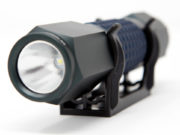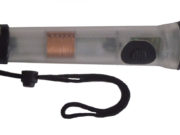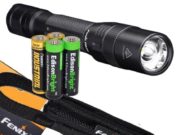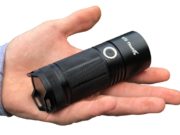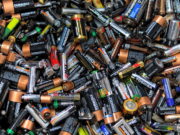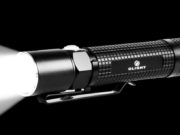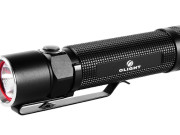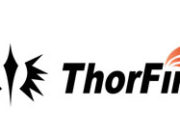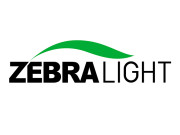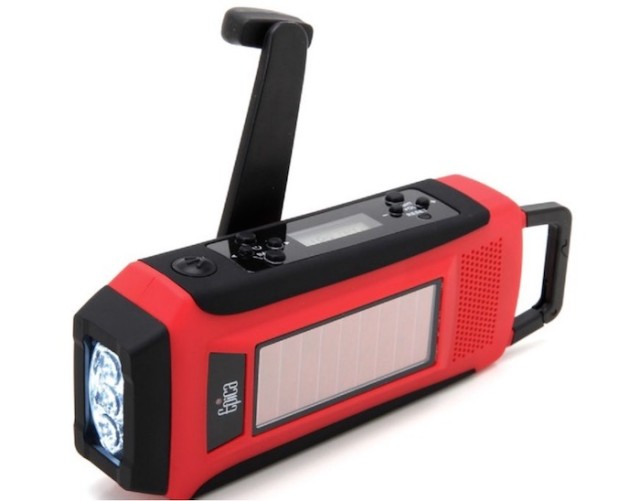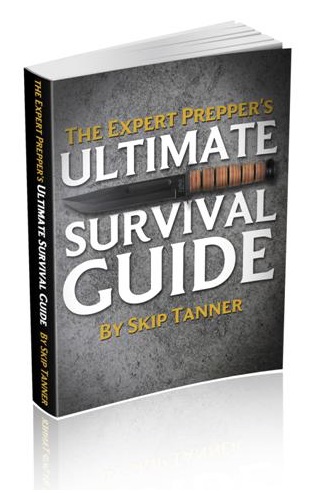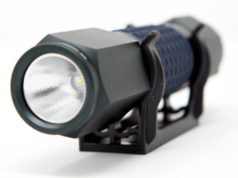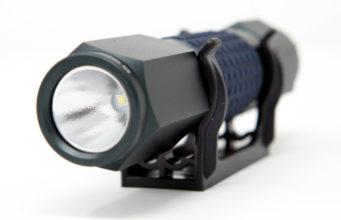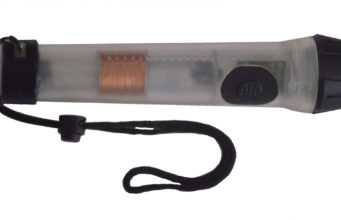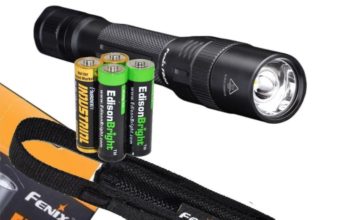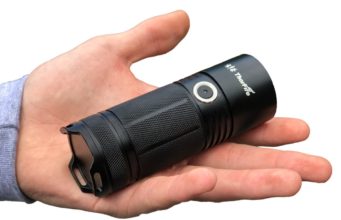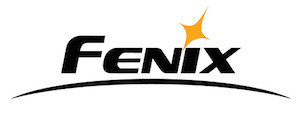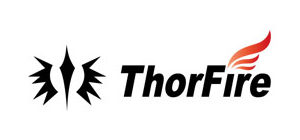A hand-cranked flashlight is a flashlight powered by electricity generated by the muscle power of the person using it. The main advantage of a hand-cranked flashlight is that it does not need replacement of batteries, or recharging from an electrical source.
UPDATED MAY 2017
It is therefore perfect in emergencies or in situations where you’re unable to replace the batteries, such as a camping trip.
There’s a lot of disagreement about what constitutes a ‘survival flashlight’. For some, it  means the tactical type of flashlight or the one with the brightest beam. For us, it’s the flashlight you wish you had with you in an emergency situation, so hand-cranked is our survival flashlight of choice.
means the tactical type of flashlight or the one with the brightest beam. For us, it’s the flashlight you wish you had with you in an emergency situation, so hand-cranked is our survival flashlight of choice.
The downside of a hand-cranked flashlight is, naturally, having to crank the handle in order to generate the power. The relationship between how long you have to crank and how long the light will last is determined by how bright the bulb is. But generally a minute or two’s slightly strenuous effort will get you light for around half an hour with a moderately bright flashlight.
As you crank the handle, the electricity generated is stored in a rechargeable battery. Typically these use lithion-ion (li-on) cells and have a capacity of around 500 charges.
Because they’re often intended for emergency situations, hand-cranked flashlights are sometimes multi-function devices. It’s not unusual to see survival flashlights with FM radios, USB phone chargers, compasses and other emergency equipment included.
Our recommended hand-cranked flashlights
Epica Emergency Solar Hand Crank Radio and Flashlight
In situations where you need to use an emergency flashlight, there a good chance that the cause of the emergency will be weather-related. If you happen to live in an area with power losses due to extreme weather, you’ll know just how useful it can be to have a radio to keep in touch with the outside world.
The Epica Emergency flashlight provides not only a decent source of illumination but a three-band radio as well (FM, AM and WX for NOAA weather broadcasts).
Its Ni-MH batteries can be charged in three ways: cranking, via the solar panel, or by USB/DC connection. A minute’s cranking provides about 20 minutes of battery life.
There’s also a USB socket to provide power to charge cell phones or other small electronic devices. Don’t expect the Epica Emergency to fully charge your phone, but a few minutes’ work will get you enough juice to make a short call.
As with most solar-powered flashlights, the solar cell is more of a ‘trickle’ top-up charger than a useful method for charging from flat. Hand-cranking is going to be your primary power source if the main power is out.
Hard to beat as a part of any home’s disaster-preparedness kit.
Amazon buyer rating: 4.3 out of 5.
Cynergy Home Emergency Flashlight
This is one of those multi-purpose flashlights that could prove invaluable – or even a life-saver – in the event of an emergency.
As well as being a flashlight, the Cynergy does double-duty (triple? quadruple?) as a cell phone charger, a window breaker, a compass and a seat belt cutter. Earlier versions also had an FM radio built in, but that feature has since been dropped.
The internal Lithium ion batteries are recharged either via a micro USB cable or by cranking the handle. It’s important not to let the unit discharge fully as that can damage the battery – make sure to crank the handle or plug it into a USB charging port if the light produced gets dim.
The flashlight is reasonably lightweight at just under 10 ounces, and a little under 11 inches in length. It’s made of impact-resistant plastic and can stand up to a reasonable amount of punishment. While it’s splash-proof, it’s not fully waterproof, so don’t try to use it under water. A torrential downpour may also cause it problems.
All-in-all, if you’re looking for an all-rounder emergency tool to keep in your automobile or home, this is a great option. Just remember to check that the battery is topped up by giving it a crank every now and again.
Amazon buyer rating: 4.4 out of 5.
RunningSnail Solar Crank Radio and Flashlight
This is another jack-of-all-trades sort of product, but there’s no doubt that it packs a lot of useful features into a remarkably compact package.
Similar to the Epica Emergency light (above), the RunningSnail provides a radio receiver to help you keep in touch with the outside world during an emergency situation. It boasts AM and FM coverage, plus seven NOAA Weather channels.
On the lighting side, there’s a LED zoomable flashlight, plus a four-LED reading lamp. Both are useful, but wouldn’t attract any attention in a standalone product – it’s purely the fact that they’re in an integrated unit that makes them useful.
Power is supplied either by hand-cranking (one minute of cranking provides 25 minutes of light or 10-15 minutes of radio), or via the attached solar panel. Inevitably, during a storm the solar panel isn’t going to be much good, so it’s probably the crank that will prove most useful.
There’s also a loud SOS alarm and flashing red light, plus you can charge your cell phone via USB cable, making the RunningSnail a valuable addition to anyone’s emergency pack.
Amazon buyer rating: 4.4 out of 5.
American Red Cross Clipray Clip-On Flashlight
With the American Red Cross name attached to it, you know that you’re dealing with a quality, reliable product, albeit a simple one.
The Clipray flashlight is purely a hand-cranked model – there are no options for solar or wall-charging. It does come with a USB socket to allow you to charge your phone, but it doesn’t officially support iPhones after the iPhone 3 or Samsung Galaxy models.
There’s anecdotal evidence that it does support these models by cranking the handle backwards, but if your primary reason for getting this flashlight is as an iPhone charger, then you may be better off looking elsewhere.
What the Clipray does do extremely well, though, is perform as a small, light, powerful emergency flashlight. Its built-in clip allows you to attach it to a belt or backup, and one minute of cranking will provide enough juice for about 10 minutes of light.
Amazon buyer rating: 4.4 out of 5.
ThorFire LED Flashlight Solar Powered & Hand Cranking Rechargeable Flashlight
An interesting – and affordable – option is this ThorFire solar-powered and hand-cranked model, which offers up to an hour’s use on full power after a single minute’s cranking of the handle.
There are three modes, which unusually aren’t quoted in lumens but in how many LEDs are being used: Low power is one LED; high power is three LEDs; and there’s an SOS mode which flashes the three LEDs.
The ThorFire is rated IPX6 for waterproofness, and is a good offering from the Chinese company. At just 6ozs, it’s light enough to stow in your backpack for a weekend’s camping trip.
Amazon buyer rating: 4.5 out of 5.
Going Fully Solar
An alternative to a hand-cranked flashlight is one powered by the light of the sun, storing solar energy during the day to be converted into light when the sun goes down.
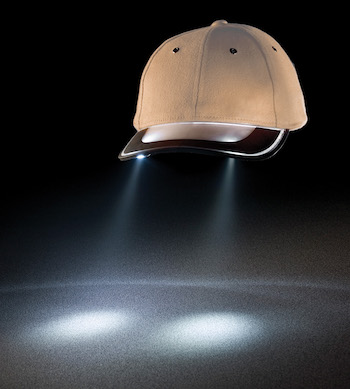 One of the biggest obstacles with solar-powered flashlights up till now has been the sheer inconvenience of charging them. Typically they’ve involved plugging in some kind of flat solar panel and leaving the flashlight in the sun during the day – not exactly a handy thing to do.
One of the biggest obstacles with solar-powered flashlights up till now has been the sheer inconvenience of charging them. Typically they’ve involved plugging in some kind of flat solar panel and leaving the flashlight in the sun during the day – not exactly a handy thing to do.
New Zealand firm 2C Light Company has taken a different approach with its range of solar-powered light caps. Available in a variety of different styles, from baseball to commander to racer, the ingenious caps charge up during the day and provide three hours of light on full brightness, or all-night on the dimmed setting.
The caps are an ideal solution for those wanting to read or work hands-free after dark. More information is available from the 2C Light Company website.
If you’re interested in learning how to keep your family safe and well-fed in times of natural disaster or even total collapse, check out Skip Tanner’s Ultimate Survival Guide. It might just save you and your loved ones’ lives.

